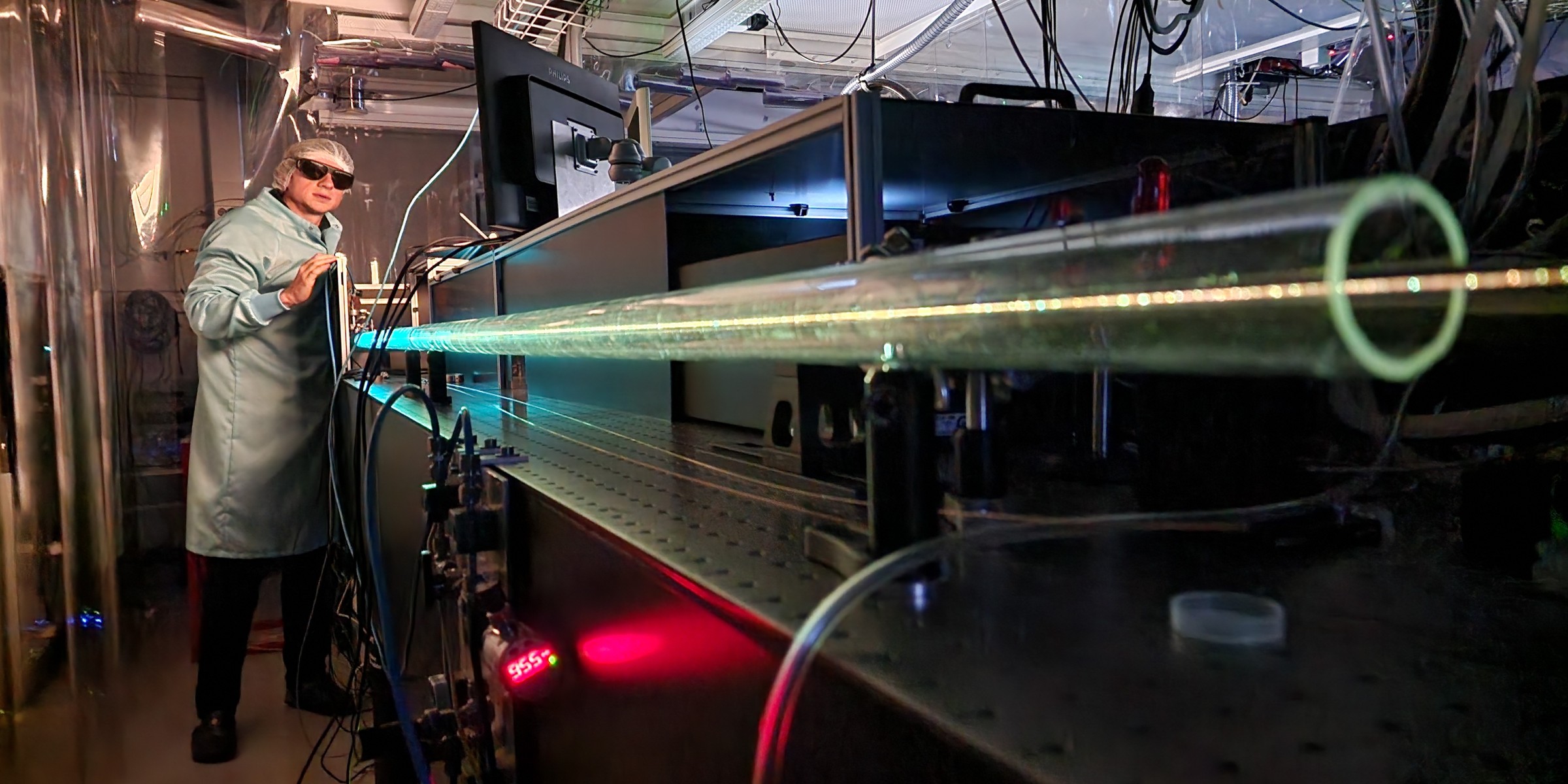| May 25, 2023 |
Snapshots of photoinjection
(Nanowerk News) A laser pulse hits an electron in a solid. If it receives enough energy from the light wave, it can then move freely through a solid. This phenomenon, which scientists have been exploring since the beginnings of quantum mechanics, is called photoinjection. There are still open questions about how the relevant processes unfold in time. Laser physicists of the attoworld team of LMU and the Max Planck Institute of Quantum Optics have now made a direct observation of how the optical properties of silicon and silicon dioxide evolve during the first few femtoseconds (millionths of a billionth of a second) after photoinjection with a strong laser pulse.
|
|
The team published their findings in (Nature, "Dynamic optical response of solids following 1-fs-scale photoinjection").
|
 |
| Laser physicist Dmitry Zimin, first author of the study, at a laser setup for attosecond experiments. (Image: Fazio Guiseppe)
|
|
This physics of photoinjection is relatively simple when it comes to the photoelectric effect explained by Albert Einstein. Here, an electron absorbs a single photon that has enough energy to free the electron from a potential that constrains its motion. It gets more complicated when no photon in the light wave has enough energy to do so. In this case, bound electrons can become free by absorbing more than one photon at once or by quantum tunneling. These are nonlinear processes that are effective only when the electric field is strong, which means that only the central part of a laser pulse can drive them efficiently.
|
|
With the tools of attosecond science, it is possible to produce most charge carriers within a single half-cycle of a light pulse, increasing the conductivity of a solid by orders of magnitude within just a few femtoseconds. The laser physicists of the attoworld team at LMU and the Max Planck Institute of Quantum Optics have investigated how quickly solids change their optical properties after ultrafast photoinjection. To do so, they sent two few-cycle pulses through a thin sample: an intense pump pulse that created charge carriers and a weak test pulse that interacted with them.
|
|
Because photoinjection was confined to a time interval shorter than half a cycle of the test field, it was possible to observe how charge carriers interacted with the test field during the first femtoseconds after their appearance. This information was encoded in the distortions that photoinjection imprinted on the time-dependent electric field of the test pulse. The scientists measured these distortions using a novel technique for optical-field sampling, and they repeated their measurements for many delays between the two pulses.
|
|
The innovative technique for optical-field-resolved pump-probe measurements now gives the attoworld team direct access to light-driven electric currents during and after photoinjection. "The most important result is that we now know how to perform and analyze such experiments and that we indeed saw the light-driven electron motion as no one could do before," says Vladislav Yakovlev, last author of the study. "We were surprised to see no clear signs of quasiparticle formation," Yakovlev explains further. “This means that, in these particular measurements, the many-body physics measurements did not have much influence on how the conductivity of the medium built up after photoinjection, but we may see some fancier physics in the future.”
|
|
All modern electronics are based on controlling the flow of charge carriers by rapidly increasing and decreasing their ability to move through circuits. The attoworld team's research is about reaching the ultimate speed limits of this control using light. The new findings could eventually help achieve future signal processing in the petahertz range, making so-called lightwave electronics possible. That would speed up today's electronics by about 100,000 times. "I would argue that we’ve just scratched the surface of what pump-probe field-resolved measurements can do. Equipped with our experience and insights, other researchers can now use our approach to answer their questions," Yakovlev is convinced.
|

